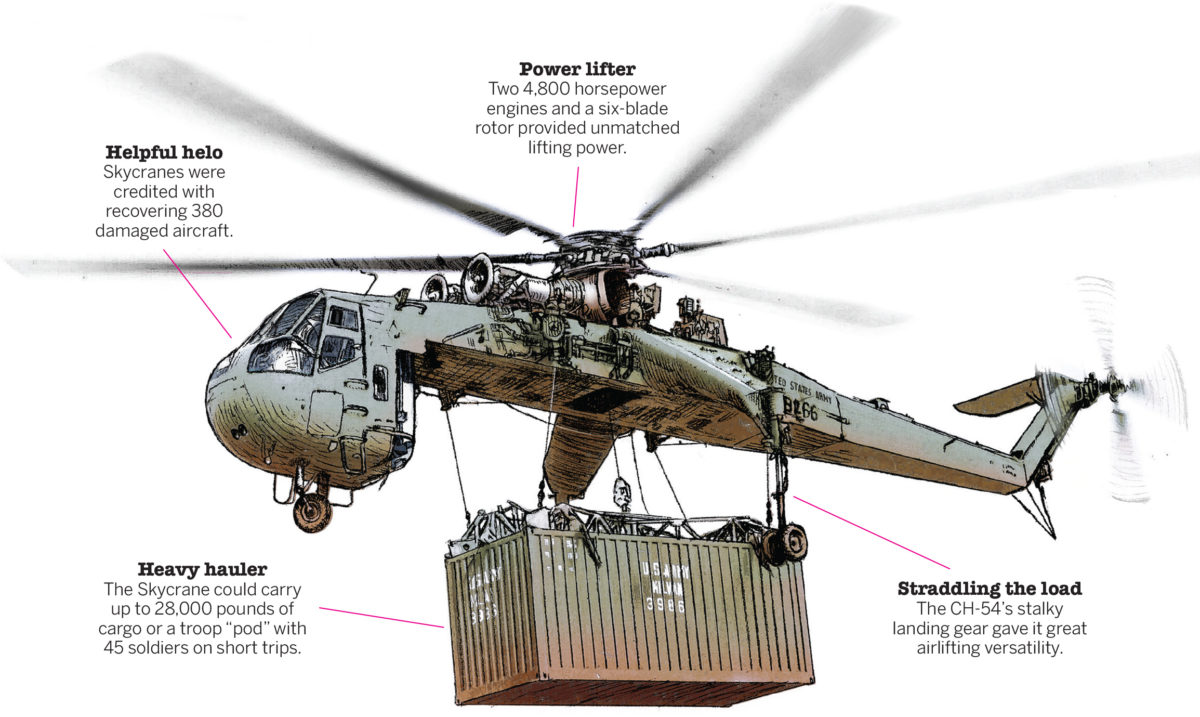On April 1, 1968, two battalions of Marines moved out from Landing Zone Stud and started to drive up Route 9 toward Khe Sanh. As the Marines advanced, elements of the 1st Cavalry Division (Airmobile) seized key terrain dominating the route ahead. By midday, CH-54 Tarhe helicopters, whose particular talents earned them the more popular name “Skycranes,” delivered bulldozers and 155 mm howitzers to establish hilltop firebases. The Skycranes also carried heavy equipment to the Marine engineers rebuilding the road. The 1st Cav’s 2nd Battalion, 7th Cavalry Regiment, linked up with Khe Sanh’s garrison on April 8, and the engineers declared Route 9 open three days later.
The Vietnam War’s heaviest-lift helicopter first flew on May 9, 1962, demonstrating a far greater lift capacity than any other rotary-wing aircraft then in service. The Army initially ordered 54, and named the aircraft after an 18th century Wyandot tribal chief. Four preproduction YCH-54s deployed to Vietnam in 1965 with the 1st Cav’s 478th Aviation Company (Heavy Helicopters). They quickly proved their worth, recovering downed aircraft and transporting 155 mm howitzers, bulldozers and other bulky equipment and supplies. They also dropped 10-ton bombs to collapse tunnels and create instant landing zones. By 1967, the Army had three heavy helicopter aviation companies in Vietnam, each with 10 Skycranes.
The first CH-45Bs arrived in 1969 with improved rotor blades, a more robust transmission and stronger engines. However, the Skycrane’s lack of armament and limited agility made it vulnerable to enemy fire. As more powerful versions of the CH-47 Chinook transport helicopters entered service, the Skycranes were increasingly relegated to rear-area missions before being withdrawn by 1972. During the helicopter’s eight years in Vietnam, one was shot down and eight were lost from operational causes.
Nonetheless, the CH-54 provided a vital service during the war, recovering more than 380 downed aircraft. Skycranes served with the U.S. Army Reserves well into the 1990s, and commercialized versions are still employed with civilian transport companies supporting the energy and forest industries throughout the U.S. Northwest, Alaska and Canada. ✯





